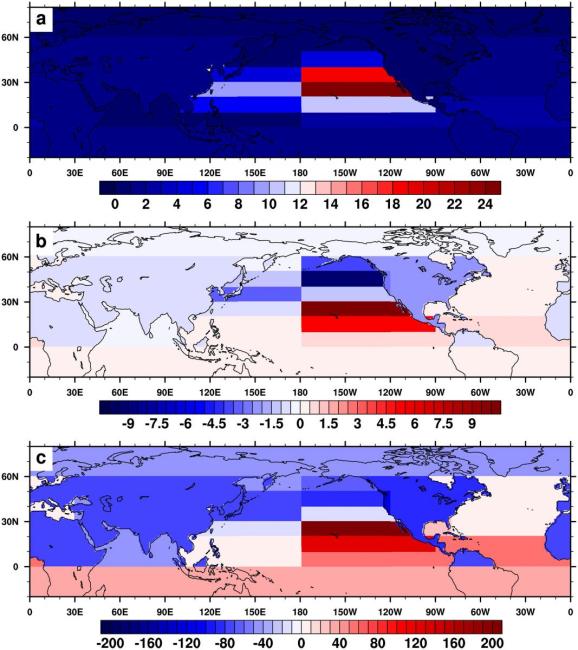Origins of atmospheric river moisture traced in model
Atmospheric rivers are long, narrow regions of greatly enhanced moisture transport in the atmosphere, commonly associated with extratropical storms. They are known to produce extreme precipitation over many locations around the globe, including the West Coast of the United States, western Europe, Chile, and even Antarctica. They are in fact associated with the majority of flood events for California, Oregon, and Washington, and are so vital for water resources in California that a lack of atmospheric rivers can even push the region into drought. Beyond their impacts on precipitation, it is estimated that the majority (85-90%) of the poleward moisture transport that occurs in the mid-latitudes is done via atmospheric rivers, which means they play a major role in the global transport of water and energy.

However, even with their significant impact on the global atmospheric water cycle, the actual average sources of moisture for atmospheric rivers is less known. Satellite images show that atmospheric rivers are connected to the tropics, but with rainout, evaporation, and atmospheric mixing occurring along the path of atmospheric rivers, it is unclear if any tropical moisture is actually present once they make mid-latitude landfall or even how far into the mid-latitudes the tropical moisture is transported, if at all. Knowing this is important for understanding the connection between the tropics and higher latitude regions, and what geographic regions contribute to the atmospheric water and energy budgets, at least in the mid-latitudes.
A new study has now helped answer this question by evaluating the moisture sources of atmospheric rivers in a climate model. Specifically, by using a new water tag and isotope-enabled model of the atmosphere, researchers found that atmospheric rivers that impacted the West Coast did, in fact, contain more tropical moisture than average, indicating that long-distance transport of tropical moisture does occur in atmospheric rivers. However, they also found that the majority of moisture was more local in origin, indicating that care is needed when assuming that atmospheric river moisture is mostly tropical. Finally, the model also predicted a change in the water isotope values of the precipitation that correlated with the moisture source region, indicating the possibility to validate these moisture source results using water isotope observations in the future.
Numerical Evaluation of the Modern and Future Origins of Atmospheric River Moisture Over the West Coast of the United States (Journal of Geophysical Research–Atmospheres)
1NASA Goddard Institute for Space Studies
2Oregon State University
Topics
- Satellites
- Pacific Ocean
- Water Cycle
- Weather
- Modeling
- Air-Sea
